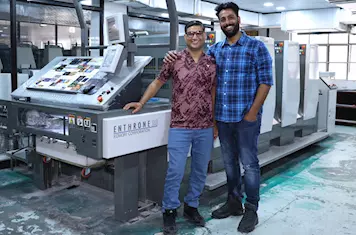Uganda: 3D printing using electronic waste
Gonzaga shows the 3D printer to students in class. There are several shots of Gonzaga teaching the pupils.
These children learn to link their imaginations to three-dimensional objects such as toys, medical devices, and construction plans.
While their understanding of 3D printing might still be hazy, this is the future for manufacturing.
Engineer Gonzaga Ntege dedicates his time to helping them learn so that they can fill the knowledge gap.
“If you have a 3D printer you can print something than you going to buy a thing for your child or relative like that”. Joshua Nteza, a pupil said.
Ntege, back at the Zopah workshop has constructed a 3D printing plant from electronic waste.
These motors and rods, which were once part of old photocopiers or printers, are now valuable at the junkyard in Kampala. Each one is not thrown away, but instead is used as an essential component in a 3D printer.
“Our goal is to reach as many African children with this technology in the next ten years so that when they are 15, 18, they are looking at their world and saying okay how can we modify it, how can we change it?” Gonzaga Ntege Mechanical engineer said.
“You find that there is a lot of photocopiers that are getting spoilt, that are being disposed of. Since the beginning of this year, I’ve been buying motors. I believe I own about 1,000 motors. So I currently have enough stock for 100 printers. We are trying to use everything that is within this space to build the technology that is needed.” gonzaga ntege – mechanical engineer/founder said.
The project already solves problems with traditional methods of plastic manufacturing, which requires a large capital outlay to get started.
A mold can run up to $6,000, while a machine could cost as high as $50,000.
It is 40% cheaper to empower local resources.
Their goal is to make the printing process more environmentally friendly, encourage pet material upcycling, and increase access for additive technology.


